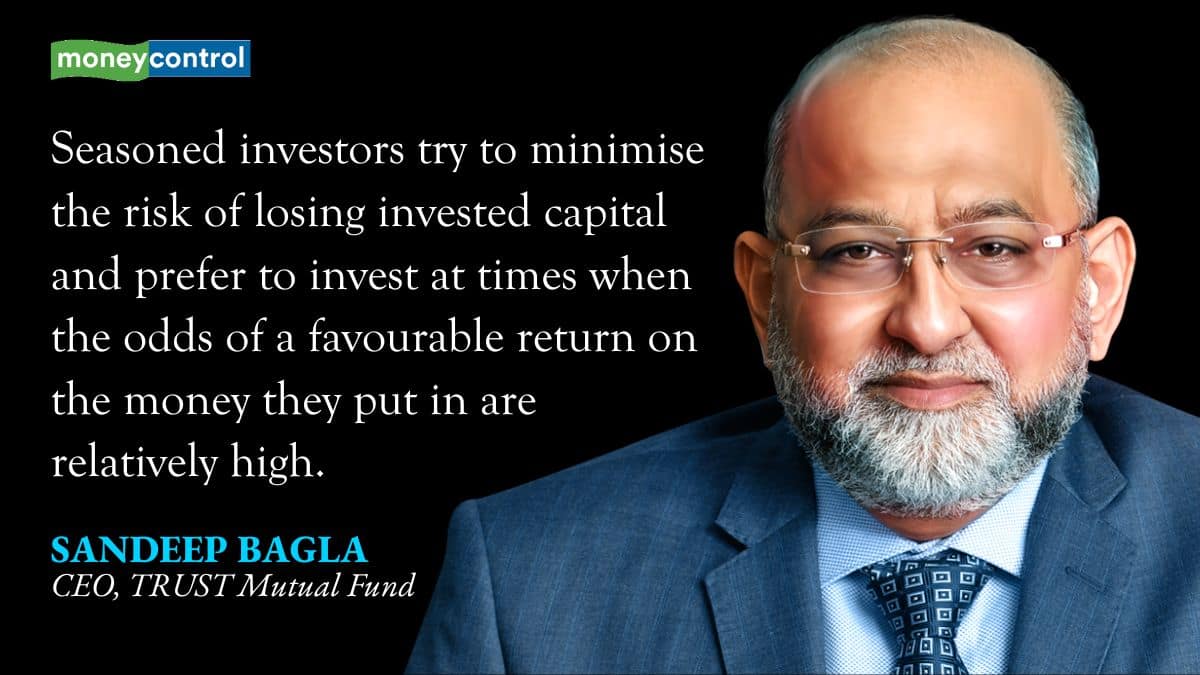
Equities as an investment class has traditionally been on the less-favoured list, but that scenario has been changing. Retail investors, encouraged by the strong performance, are increasing their participation in the Indian stock market, through regular periodic contributions, popularly known as systematic investment plans (SIP), or one-time larger lump-sum investments, as well as through new fund offerings from various mutual funds. Nearly Rs 19,000 crore of inflows a month into mutual funds come through SIPs now.
While the investment trend is fast picking up pace, one should be aware of an important distinction between investments and savings. When one saves, there is an expectation of earning a fixed but low, predictable return and an implicit promise of safe of return of capital after a predetermined period. When one invests, one aims for a higher return than what savings schemes offer and there is a distinct chance that the principal invested may be at risk and may not be returned, ever, either partially or fully. In investments, there is no capital protection.
Seasoned investors try to minimise the risk of losing invested capital and prefer to invest at times when the odds of a favourable return on the money they put in are relatively high. There are times when market valuations are low and one can identify opportunities rather easily, in which the risk-reward ratio is in favour of the investor. At other times, stock are expensive and one must be careful and take safety measures while investing.
Also read | MF stress test: Check whether your smallcap fund has these illiquid stocks
There are three ways in which many investors typically try to reduce risk while making investments. These are methods adopted by savvy investors. Let’s go through them and see which one works best in these times.

Research
Follow a fundamental research-based approach looking at conventional valuation parameters and invest only when price is lower than perceived intrinsic value of the stock. One makes large lump sum investments under this strategy.
What works: high chances of earning good returns and lesser chances of sharp fall in portfolio value, especially if one can identify growth stocks at a reasonable price and can hold on to them for a long period of time
What doesn’t: inability to identify reasonably priced stocks in elevated market conditions
The SIP method
Here's where you invest equal amounts at regular intervals, say fortnightly, ensuring investments are made at different price levels irrespective of fundamental valuations
What works: It is a disciplined approach that ensures the investor is able to take advantage of market dips and benefit from rupee cost averaging; great if the investment is made for the long term and the economy is on a steady growth path.
Also read | March mayhem in equity markets: Where to invest your money today
What doesn’t: There could be a long period when the portfolio remains in loss due to a slump in the market. Alternatively, in a very strong trending market, one may miss out on the opportunity of making gains afforded by making large, one-time investments.
The asset allocation model
In this secnario, an investment advisor will carefully assess the assets, goals and risk appetite of the investor and customise a plan that entails money put in across asset classes in such a way that the return expectations of the investor are reasonably set and the volatility in the value of the portfolio is generally reduced due to diversification.
What works: There is greater predictability in returns, financial goals can be met, tax planning can be incorporated and the portfolio is spread over different asset classes which do well at different points of time, thereby reducing risk.
What doesn’t: There could be a feeling of missing out or underperformance, when one asset class delivers a significantly superior return in a short span.
Also read | Investing in an ESG fund? Look for greenwashing risks in its disclosures
Let us examine the current market levels for better context while choosing an investment strategy that minimises risk.

The Indian equity market is strong and has delivered higher returns than most global peers with the exception of the Nasdaq, the tech-heavy US index. The Indian economy is growing at around 7 percent annually and that is the highest projected rate of growth among all major economies. The relatively strong growth story, global liquidity, a general environment of stability—are point towards the continuance of the Indian equity story for years to come.
By historical standards and comparisons, most of the conventional valuation parameters indicate that the market is already discounting the growth opportunities and there is little margin for error while making investments at these levels. Investors should be prepared for periodic bouts of volatility and be prepared to stay invested for the long term to ensure proper returns.
Small- and mid-cap funds, having delivered stupendous returns in 2023, are attracting the lion’s share of incremental inflows. The valuation of these indices are higher than that of their large-cap stock counterparts. However, while one should allocate to mid- and small-cap funds, it should be done only as per the predecided allocation plan. It’s time to be mindful that we mustn’t be greedy with small- and mid-cap funds at present.
Also read | Stress test of mutual funds: Winners and losers in round 1
While making lump-sum investments or undertaking periodic SIPs could work for some investors, if one really wants to reduce risk while making investments at the current juncture, it is advisable to stick to a prudent, all-weather asset allocation plan that spans multiple asset classes. To arrive at the right asset allocation plan, one must take the help of an investment advisor or a wealth manager. Just like one takes the help of a doctor or a nutritionist or a fitness coach to lead a healthy life, one must also engage with an advisor to ensure financial health. It is important, in order to reduce risk and even more so when the market is at the level it is at, that investments are made after taking into account individual situations and as per a carefully crafted customised plan with the help of an investment expert.
Discover the latest business news, Sensex, and Nifty updates. Obtain Personal Finance insights, tax queries, and expert opinions on Moneycontrol or download the Moneycontrol App to stay updated!